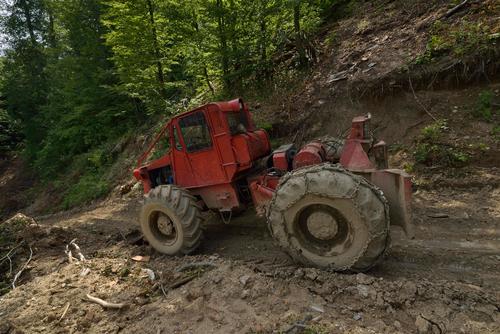++ The Recovery and Resilience Facility (EUR 672.5 billion) – claimed by the European Commission to be the main driver for Europe’s ‘green recovery’ - is failing to support and protect nature, according to a new Bankwatch and EuroNatur report published today. . ++

In Romania, the forests are to be "made fit for the future". It is to be feared that this will further increase overexploitation in the Carpathians.
© Matthias SchickhoferBrussels/Radolfzell. The report highlights the lack of measures to address the biodiversity crisis -- one of the biggest of our time -- and exposes damaging measures from the recovery plans of nine central and eastern European countries.
The poor state of biodiversity in the EU calls for immediate action and more EU funds to fight this crisis. Yet only less than 1 per cent of this unprecedented Facility has been allocated to nature protection or restoration projects. Conversely, some of the projects from the recovery plans would instead, damage nature.
In Bulgaria and Latvia, projects aimed at supporting renewables highlight the potential conflict between climate action and biodiversity, underlining the need for sufficient environmental safeguards. This issue could have been avoided by better planning and by taking into consideration the expertise delivered by civil society organisations. The Latvian government is simplifying permitting procedures which allow wind farms in forests, and snuck support for such projects into its recovery plan after the public consultation and ‘do no significant harm' assessment had already been carried out.
Water management projects in Hungary, Croatia, Latvia and Poland will support building reservoirs, pumping stations, channels, or rivers’ regulation, often in highly sensitive areas, including Natura 2000 sites. These threaten to turn rivers and streams into dead channels and ponds devoid of life, degrading water quality as a consequence. The cases from Slovenia, Estonia, the Czech Republic and Romania show how forestry projects that appear positive at first sight will instead most likely encourage even more intensive forest cutting.
Many of these projects were planned and negotiated behind closed doors with no information on their location and without proper assessment of their impact on nature. Potential harm on biodiversity cannot be reverted and these examples show why and how EU funding must be biodiversity-proofed.
Daniel Thomson, EU policy officer for biodiversity with CEE Bankwatch Network, said “Billions of euros of public recovery funds are now in the process of being disbursed, yet we still don’t know the full details of what’s actually being financed. At first glance, many projects may appear harmless – or even beneficial – to nature. But digging a little deeper reveals a new wave of biodiversity-damaging funding that will have consequences for years to come.”
Thomas Freisinger, EU policy officer with EuroNatur, said “Member states were given a unique opportunity to make this recovery a turning point to address biodiversity loss. Yet, business as usual was chosen. The Commission needs to create the incentives and safeguards that are necessary for a real shift.”
Background information:
- Report Behind the 'Green Recovery’ - How the EU recovery fund is failing to protect nature and what can still be saved
- Here you will find the tabular overview of proposals of concern from national recovery and resilience plans.
For more information contact:
Thomas Freisinger, EU policy officer EuroNatur, thomas.freisinger(at)euronatur.org, Tel.: 0032 499 93 93 42
Daniel Thomson, EU policy officer for biodiversity CEE Bankwatch Network, daniel.thomson(at)bankwatch.org


